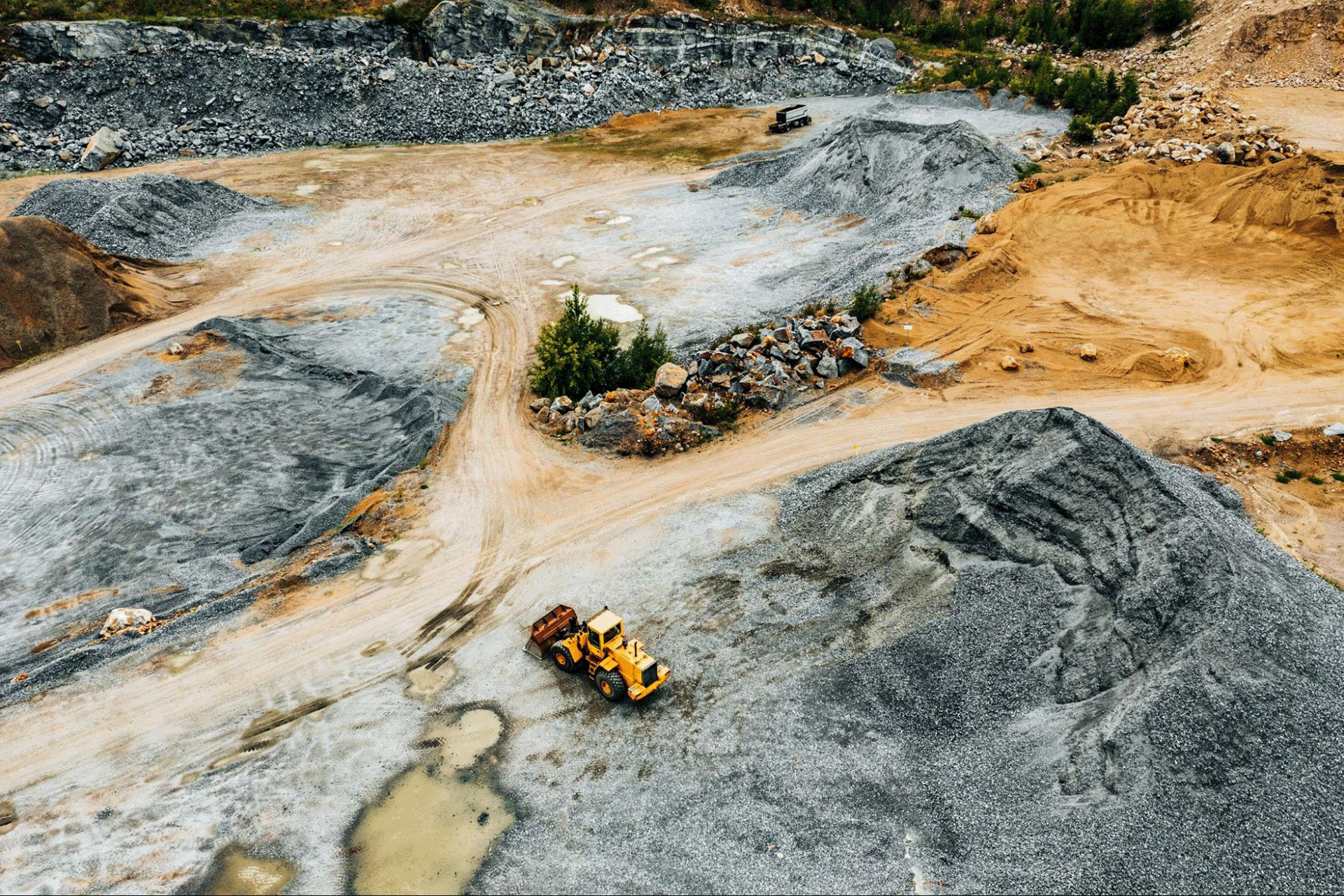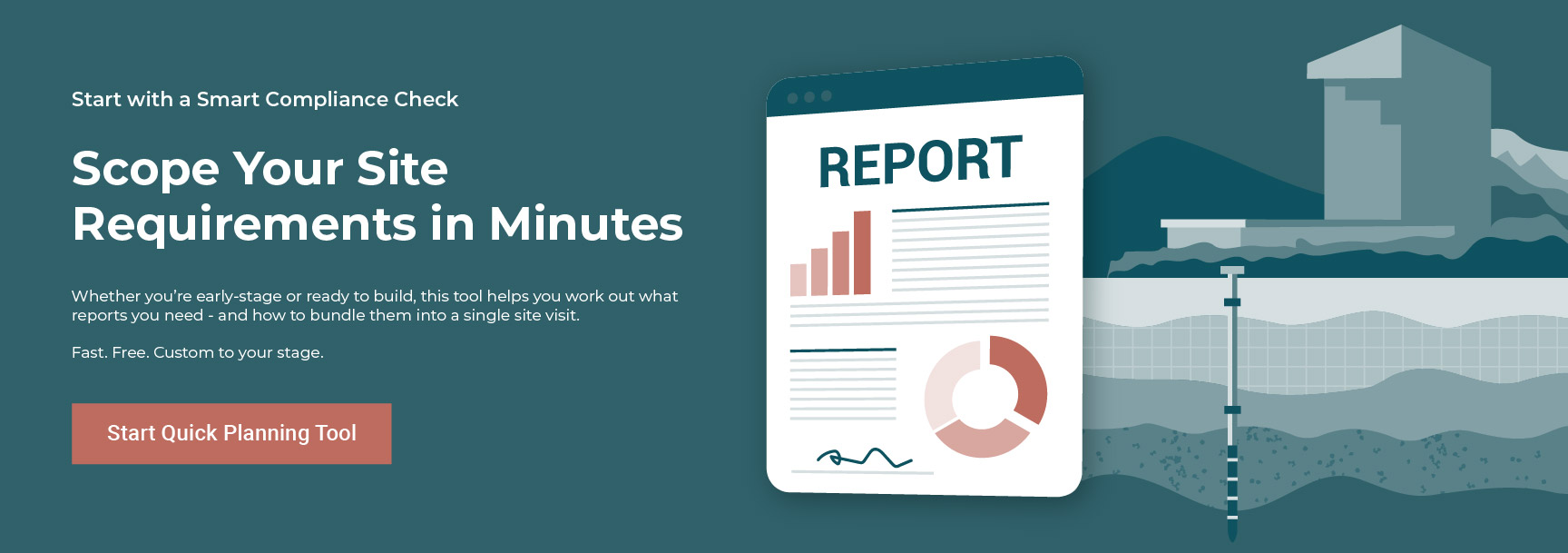Understanding the key phases of a contaminated land investigation is essential for property developers, environmental consultants, and stakeholders managing site risk. From uncovering potential contamination to developing remediation plans, each phase plays a critical role in meeting NSW EPA compliance and protecting human health.
This article answers five commonly asked questions about the contaminated land investigation process.
When Is a Contaminated Land Investigation Required?
A contaminated land investigation is typically triggered during due diligence for property transactions, development approvals, or following the discovery of hazardous materials such as asbestos, heavy metals, or hydrocarbons. These investigations are often mandated when:
- A site has a history of industrial or commercial use
- Changes in land use (e.g. from industrial to residential) are proposed
- Contamination is suspected or confirmed during earthworks
- Regulatory notices or planning authorities require a formal assessment
In NSW, contaminated land management is regulated under the Contaminated Land Management Act 1997 and the SEPP (Resilience and Hazards) planning framework, with strict guidelines from the EPA and local councils.
What Happens During a Preliminary Site Investigation (PSI)?
The Preliminary Site Investigation (PSI) is the first formal step in assessing contamination risk. Its purpose is to identify whether contamination is likely based on the site’s history, condition, and surrounding land uses.
Key PSI activities include:
- Desktop review of historical land use, aerial imagery, and planning records
- Site inspection for visible contamination or signs of distress (e.g. chemical drums, staining)
- Interviews with current or past owners/operators
- Review of adjacent land uses and potential contaminant migration
The PSI helps determine if further investigation is warranted. If no risk is identified, the site may be cleared for development. If potential risks are present, a Detailed Site Investigation (DSI) is usually recommended.
What Does a Detailed Site Investigation (DSI) Involve?
A DSI is more invasive and provides data-driven insight into the presence, type, and extent of contamination. It typically includes:
- Soil and groundwater sampling and laboratory analysis
- Surface water and vapour testing (where relevant)
- Use of boreholes and monitoring wells to assess vertical migration
- Human health and ecological risk assessments
- Contaminant pathway modelling (e.g. air, water, soil transport)
The goal of the DSI is to confirm whether contamination levels exceed investigation thresholds set out in the National Environmental Protection Measure (NEPM) and local EPA guidelines. If contamination is present above acceptable levels, the site may require remediation before it can be redeveloped.
Start with a Smart Compliance Check
Scope Your Site Requirements in Minutes
Whether you're early-stage or ready to build, this tool helps you work out what reports you need and how to bundle them into a single site visit.
Fast. Free. Custom to your stage.
What Is a Remedial Action Plan (RAP) and When Is It Needed?
If the DSI confirms contamination that poses a risk to human health or the environment, a Remedial Action Plan (RAP) must be developed. This document outlines:
- The nature and extent of contamination
- The proposed remediation goals and objectives
- The selected remediation strategy (e.g. excavation, soil washing, capping, bioremediation)
- How compliance with regulatory standards will be verified
- Long-term monitoring or management requirements
The RAP must be approved by the relevant authority (e.g. council or EPA-accredited auditor) before remediation works begin. Consultants manage the RAP process to ensure technical accuracy and regulatory alignment.
What Happens After Remediation Is Completed?
Following remediation, the site undergoes validation and reporting to confirm that all contamination has been addressed appropriately. This phase may include:
- Post-remediation sampling to verify clean-up targets were achieved
- Validation reports documenting all works and outcomes
- Long-term management plans if residual risks remain
- EPA sign-off or a site audit statement (for high-risk or complex cases)
Only after a site is validated can it typically proceed to development, rezoning, or sale. Having a clear audit trail of investigations, decisions, and outcomes is essential to demonstrate compliance and minimise future liability. If you are interested in our comprehensive site validation process, read more here.
Reduce Development Risk with a Staged Investigation Approach
Contaminated land investigations are not just a regulatory requirement – they’re a vital tool for protecting investment, public health, and environmental outcomes. A staged approach that begins with a PSI and progresses through DSI, RAP, and validation allows for accurate decision-making and avoids unnecessary cost or delay.
How Nova Group Pacific Can Help
Nova Group Pacific has extensive experience conducting PSIs, DSIs, RAPs, and site validations across NSW. We provide end-to-end contaminated land management support, ensuring compliance with EPA requirements and safeguarding your project timelines.
Book a consultation today to discuss your site's investigation and remediation needs.












.png)







